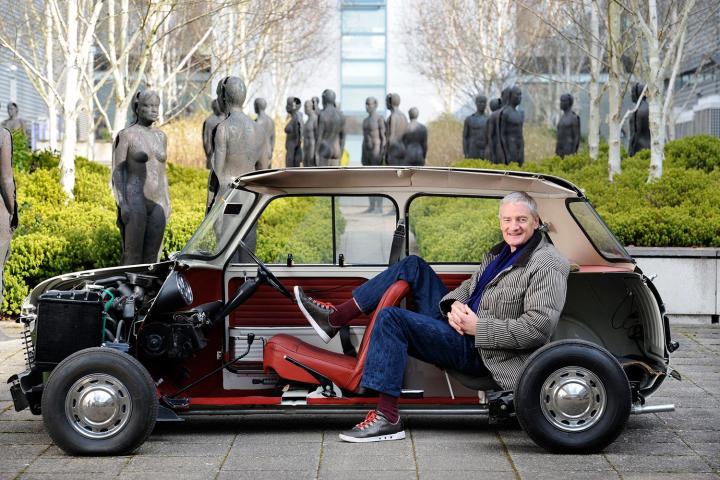
Serial inventor James Dyson is best known for his eponymous line of vacuums, but the company has invented countless items over the years – including a voice-controlled, augmented-reality headset that predates Google Glass by a good decade.
To celebrate the 21st anniversary of the release of the world’s first cyclonic vacuum cleaner, Dyson dug through its vaults to reveal some of the never-before-seen ideas that have come out of the company’s incredible R&D efforts.
A virtual personal assistant could read out emails and interpret basic voice commands.
Among these: a special filter to clean the notoriously filthy emissions from diesel cars, a fuel cell well ahead of its time, and a gizmo that might make Google’s patent lawyers cringe: The Dyson Halo.
Three years’ worth of work on what would become the Halo kicked off in 2001, though at first it was given the secret project name N066 (a little less catchy). The Halo was to be a portable, head-mounted, wearable computer, something that could fold up to be carried in the user’s pocket and worked as a communications device and PC.
It had a headset that could be worn like a pair of glasses, and used audio prompts and visual cues to overlay information on your surroundings — and if that sounds familiar to you, you’re not alone. But Google kicked off development of its Glass program sometime in 2011, though the first Explorer Edition models weren’t released to developers until April 2013.

Other companies have developed and released wearable technology, of course, though none has captured the world’s attention like Glass. But there are more similarities between the Halo and Glass than with other devices. For one thing, the headsets look alike — both are wearable bands that connect to a mirror prism display. The newest versions of Glass are worn like a traditional pair of glasses, but it started as a band. And in one concept, the Halo was a forehead band with two displays left and right; in the other, a behind the head band, it was a single prism, just like Glass.
The interface was very different, however. Google relies on modern processing power for natural language interface in the Glass — and does a very good job of it, at that — and consequently has a very simple interface consisting of a few lines of text. Dyson’s gadget also supported voice control and speech recognition, but the main interface was a series of icons for apps similar to those on a modern smartphone. In the prototype, the user could see and use several different key applications. A virtual personal assistant could read out emails and interpret basic voice commands, but was unable to interact with the wearer.
Today, Dyson continues its R&D efforts — one third of all employees are engineers and scientists.
The miracle of miniaturization leads to a second difference: Google has built the brains of Glass directly into Glass itself, or relies upon cloud technology for processing. Dyson incorporated a portable computer that looks an awful lot like a Walkman.
The headset could be detached from the wearable computer, and the mobile device could be docked into a monitor to become a desktop computer, giving the same effect as plugging a laptop into a TV.
A third piece of the gizmo was meant to be worn on the wrist, a control pad that wirelessly connected to the Halo. It had a touch pad to let the user move a mouse among the icons on the screen, as well as a scroll wheel and a “joypad” — make up your own joke here. Another concept: a pull-out portion of the control pad that exposed a track pad, allowing the company to shrink the overall watch.
Today, Dyson continues its R&D efforts — one third of all employees are engineers and scientists — investing in a pipeline of products including a not-so-secret robot vacuum that has yet to be released.

“Chasing ideas, no matter how implausible they seem, leads to discovery,” Dyson said. “Fans without blades and hand dryers that actually dry your hands wouldn’t have come about unless Dyson engineers had the freedom to experiment. We’ll be doing it for the next 21 years, and the opportunities are only becoming more exciting.”
Bring it, James.
Editors' Recommendations
- Digital Trends Live: HoloLens 2 and Stadia available, James Dean is back
- Google Calendar is back online. Here’s the latest on the outage






